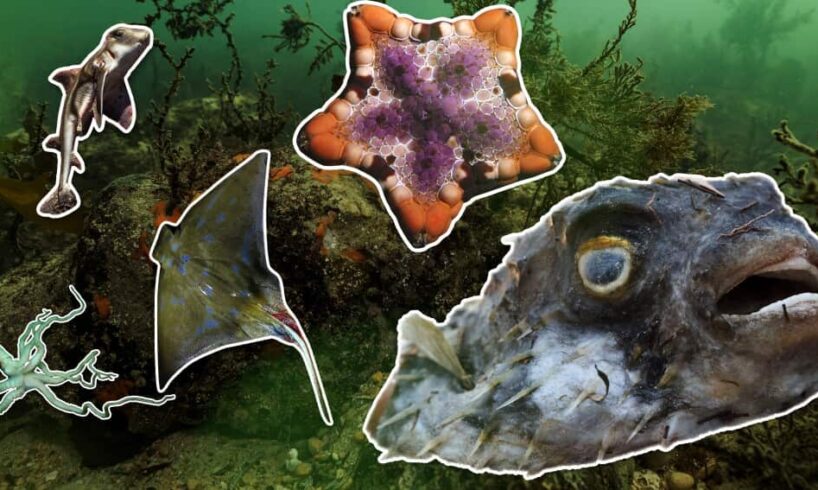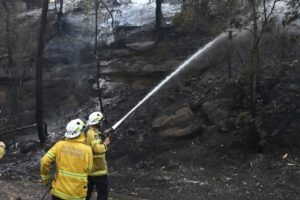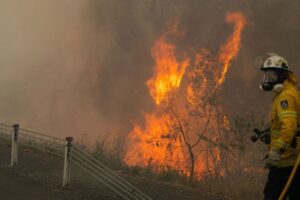
An algal bloom crisis in South Australia that has killed thousands of marine species has been described as a natural disaster by the state government, with scientists labelling the situation an “ecological catastrophe”.The bloom has devastated the marine environment in South Australia, and experts have warned it could have serious ecological ramifications for years to come.
Here’s what you need to know about the algal bloom, its impacts, and why it has scientists and advocates so concerned.
What is an algal bloom and what causes it?
An algal bloom refers to a rapid increase in the population of algae. While it is a naturally occurring phenomenon, it can be exacerbated by climate change and extreme weather conditions.
Nina Wootton, a marine scientist at The University of Adelaide, said a warm summer, marine heat wave, and delay in seasonal temperature dropping had contributed to the development of this algal bloom.
“There’s a mixture of ideas about how this first occurred, but we know that it’s been lying dormant here for a while, and we’ve had blowups of these kind of species previously … but not of course to this extent,” Wootton said.”It’s sort of this perfect storm of environmental factors that caused this to happen in the first place.”Martina Doblin is a professor of oceanography at the University of Technology Sydney with expertise in harmful algae, and the director of the Sydney Institute of Marine Science.She said algae play an important role in ecosystems, and algal blooms are naturally occurring events in the springtime as the temperature warms up.”But a harmful algal bloom is something that really is categorised by the impact it has on people and the environment,” she said.
“In this particular case, this alga produces harmful substances that are toxic to certain animals.”
Nina Wootton said the algal bloom is an “ecological catastrophe”. Source: Supplied
The bloom has now killed tens of thousands of specimens from hundreds of different marine species. Wootton said this will have devastating consequences for ecosystems, describing it as an “ecological catastrophe”. “The reason that I’m really concerned is that it has the potential for these long-term consequences for the marine environment; it’s not just this one-off event,” she said.
‘It’s potentially as we go down the track that it’s going to cause longer issues and we’re expecting to see more and more of these sorts of things with climate change.”
Where is the algal bloom in South Australia?
The bloom of the microalgae species Karenia mikimotoi was identified off South Australia’s Fleurieu Peninsula in March, and grew to more than 4,400 square kilometres, close to the size of Kangaroo Island.
It has been breaking up in recent weeks, spreading north into Spencer Gulf, south into the Coorong wetlands and along Adelaide’s beaches in Gulf St Vincent into the Port River.
Is algal bloom harmful to humans?
While algal bloom is not as toxic to humans as it is to marine life, Wootton said it is harmful.
She said some people may exhibit symptoms of an allergic reaction — such as watery eyes, irritated skin, or trouble breathing.
Others may experience emotional impacts.”A lot of Australians have a really close connection to the marine environment and seeing it in such a sense of despair, I think that eco grief also is starting to play a bit of a role here,” Wootton said.”It’s not going to hopefully kill anybody, but it’s definitely causing issues psychologically and mentally as well for these communities that are right on the frontline, like fishers and the industries that are really suffering from this at the forefront as well.”Doblin said the long-term impacts on human health are not yet clear, and suggested they should be monitored as the crisis continues.
She said people living in coastal communities may be inhaling toxins, being affected by foam at the water’s edge, and having skin reactions.
“We probably have incomplete records about the direct human health impact, but certainly physicians in that area should be aware that if people are coming in with unusual symptoms, this could be a cause,” Doblin said.
“And they could be proactive in asking for particular blood tests that would tell them perhaps about exposure to this particular toxin that the alga produces.”
How to get rid of an algal bloom
Getting rid of a large algal bloom is a complicated process, but there are several techniques that could be used, Doblin said.This could include dispersing clay particles into the surface ocean to settle algae on the ocean floor, aerating or introducing oxygen to disperse algae, or a biological measure such as introducing bacteria to target the algae.But Doblin said there are negatives to each of these options, and they would need to be used very carefully.
“Not any of those options are easy to deploy over such vast areas, and so you would use them in very specific instances where you’re really trying to avoid further damage on key assets,” she said.
She also said a longer-term, nationally coordinated approach is needed to prepare for future events.”There also needs to be underpinning research that might actually help us come up with new techniques to mitigate harm and to better understand what we can do to prevent such an extensive occurrence,” she said.”So not to just take a short-term view, but really the government should invest in a long-term view and have that be nationally coordinated.”Wootton said she believes the algal bloom is unlikely to go away without a strong winter storm season to mix up the algae, cool it, and break it up to blow off the coast.She said methods such as better land management, reducing nutrient runoff, and having a real-time monitoring system should be introduced to stop such an incident from happening again.”And also creating a response that can coordinate industry to adapt a bit better and more quickly in terms of fisheries closing and making sure we know about it as soon as we can and that will feed in by the real-time monitoring,” she said.
“So that we can be on top of it and hopefully have the ecosystem not suffer as much as it did this time around.”
Is the South Australia algal bloom a natural disaster?
On Monday, federal Environment Minister Murray Watt announced a $14 million federal funding package for the South Australian government.”There’s no doubting whatsoever that this is a very serious environmental event facing South Australia,” he told reporters.
“We are in uncharted waters here.”
Environment Minister Murray Watt announced $14 million in federal funding in response to the South Australia algal bloom crisis. Source: AAP / Matt Turner
When asked whether the bloom and its impact should be declared a natural disaster, Watt said it was not possible under the existing definition.But on Tuesday, Premier Peter Malinauskas told ABC News Breakfast he had a different view.”From the South Australian government’s perspective, I want to be really clear about this. This is a natural disaster,” he said.”I think politicians can do themselves a disservice when they get caught up in technicalities. This is a natural disaster and should be acknowledged as such.”
Wootton said she believes the algal bloom should be declared a natural disaster as this would unlock access to more federal assistance and funding streams. She compared it to extreme weather events in recent years, such as bushfires and floods.
“I personally just think that if this was happening in Sydney or in beaches around a more populous area, it would’ve already been called a national disaster,” Wootton said.”It’s like a bushfire but underwater.”She said she does not think the Great Southern Reef gets enough recognition across the country.”It’s home to so many different species that are only found on the Great Southern Reef, and it leaves me feeling really sad at the thought that some of those species are going to be lost.”It’s really, really frustrating to be honest, but it’s hard when there’s not really one easy solution.”— With additional reporting by Australian Associated Press
Source





